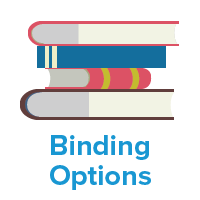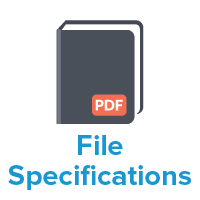A few years ago, most of us thought that it was just a matter of time before printed books became a thing of the past. This was following the great advancements made in technology, with e-books and other content being made easily and accessible on the internet.
However, contrary to popular beliefs, book printing has stuck around. What’s even better, this industry has developed new trends; trends that have made printing books cooler and a more preferred way to learn and digest content. These new trends in book printing have also made this industry popular, even in a world overly saturated with digital content.
In fact, according to a research study, only 6% of the U.S adults read digital books while 38% read printed books. Indeed, this is clear proof that book printing has not lost its importance or become outdated; rather, it is an ever-evolving landscape that is gaining even more popularity day by day than e-books and other digital content.
Therefore, whether you are an author, a book printer, or a publisher, you need to not only learn about these changing trends in the industry, but also evolve with them. Only by so doing will you be able to meet the different demands of your readers and publishers.

Consider the following three major trends that have been made in the book printing industry:
1. Content is Now Available Across All Channels
Readers want to access content easily and in any channel of their choice. Authors, book printers and publishers are now making their content accessible across different channels, such that readers can get content whenever and wherever they need. In fact, print books are considered an essential part of the multichannel mix.
2. Increased Use of Print on Demand
Print on Demand (POD) refers to a method where books and other items are printed immediately on a made to order basis. This order fulfillment method allows independent publishers and self-publishing authors to print only what they need. Therefore, publishers and authors can save on costs which would’ve otherwise been spent printing and storing thousands of books.
The production of digital technology has made it possible to produce print on demand books quickly and inexpensively. This printing technology ensures the production of books will be of high quality, efficiency printed and have low production costs.
3. Shorter Run Lengths
Shorter print runs especially prove beneficial when it comes to reprinting books. This latest trend in the industry has given publishers better control over inventories and costs. Also, it has helped them find new streams of revenue, such as from out-of-print titles, reprints and backlists.
In addition, the development of shorter print runs has led to a significant growth in custom publishing and self-publishing. These are benefits that have been made possible only recently.
One such development that has made it possible to produce short run lengths is digital printing. This technology is mainly used for short to medium print runs. It is preferred for its high flexibility, low running costs, low waste production and high speeds.
Advantages of Printed Books Over E-Books
Yes, we live in a digital world where almost everything can be accessed online. Even so, digital content has the same impact and timelessness as that of a printed book. How so? Consider the following advantages of printed books that make these better than e-books:
- Flipping pages is much easier with printed books – You can easily flip to the index, the introduction, or any other page that you like. On the contrary, pages opened in e-books are easily lost and not easy to retrieve.
- Compared with e-books, printed books are easier to review – With print, you can easily highlight important points, scribble notes in the margins and attach sticky notes in different pages. This makes reviewing or blogging about the book easier.
- Printed books offer a more tactile sensation than e-books – For example, you can easily estimate your reading location by simply comparing the thickness of the pages you are yet to read and those that you have already read.
- Research studies conducted show that people remember more from what they read in printed books than in e-books – This can be attributed to the great tactile sensation offered by printed books, where even the smell and texture of the book impacts the reader’s memory.
- Print is very easy and safe on the eyes – This is contrary to most e-books which use backlit screens. And studies show that backlit LCD screens transmit a very powerful light; light that is almost as powerful as that of an unfiltered car headlight. This blue light damages the cells in the retina, causes problems with our sleeping patterns and causes a strain on the eye muscles. Therefore, reading printed books is much safer for the eyes and your body as a whole.
- Print is more available and easily accessible – Unlike e-books and other digital content, you won’t have to charge or boot up your printed book. Also, you won’t have to worry about viruses, passwords or your device crashing.
- They make you look smarter – I mean, who doesn’t want to appear smarter and wiser? And having a shelf (or library) of printed books does more than just make you look smarter; the exposure to all those books makes you more knowledgeable and academically wiser.
In a world filled with digital content, the printing industry is making quite a comeback. New trends are being adopted, creating more opportunities for printers, and allowing them to meet all the different demands of readers and publishers. And the more book printers adopt these trends, the more success they will experience now and in the future! After all, the book industry is backed by so many advantages that not even e-books can come close to providing.







